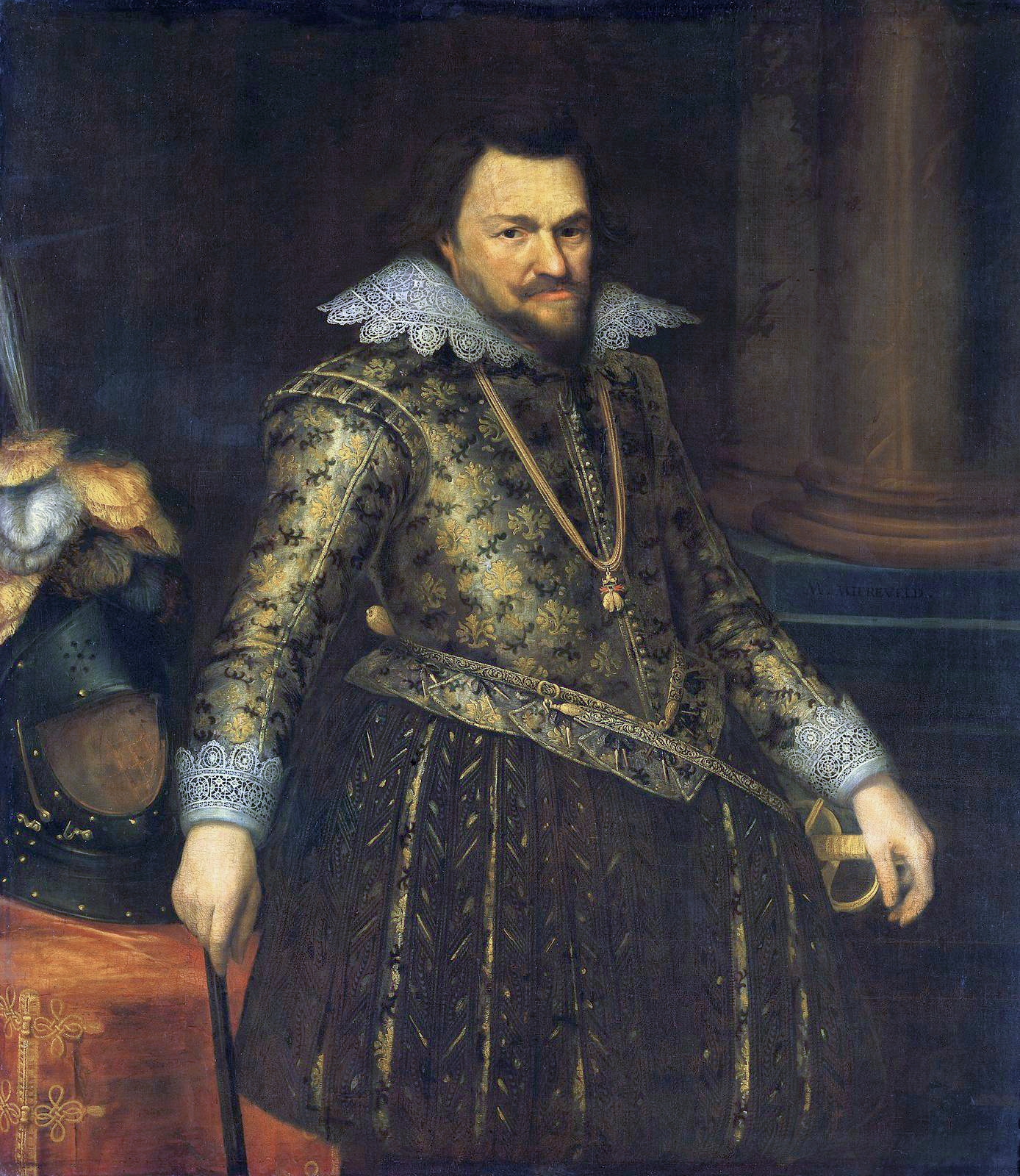- Philip William, Prince of Orange
Infobox Person
name = Philip William, Prince of Orange
image_size = 250px
caption = Portrait of Philip William byMichiel Jansz van Mierevelt
birth_name =
birth_date = birth date|1554|12|19|df=yes
birth_place =Buren ,Seventeen Provinces
death_date = death date and age|1618|2|20|1554|12|19|df=yes
death_place =Brussels ,Southern Netherlands
death_cause =
resting_place =Diest ,Belgium
resting_place_coordinates =
residence =
nationality =
ethnicity =
citizenship =
other_names =
known_for =
education =
alma_mater =
employer =
occupation =
home_town =
title =
religion = Roman Catholic
spouse =Eleonora of Bourbon-Condé
parents =William the Silent Anna van Egmont Philip William, Prince of Orange (
19 December 1554 –20 February 1618 ). He was the eldest son ofWilliam the Silent , who played an important role during theDutch Revolt , by his first wifeAnna van Egmont . He becamePrince of Orange in 1584 and Knight of the Golden Fleece in 1599.Biography
Philip William, Filips Willem in Dutch, was born on
19 December 1554 inBuren ,Guelders ,Seventeen Provinces . He was the first son ofWilliam the Silent andAnna van Egmont .When his father William the Silent ignored Alva's summons to return to Brussels, remaining in Germany. Philip William, only a boy of 13, was studying at the university at
Leuven . He was seized in February 1568, and taken to Spain partly as a hostage, but especially to be raised as a good catholic and loyal subject. He would never see his father again. His mother had died in 1558 already.In Spain he continued his studies at the university of
Alcalá de Henares . He remained his catholic practices until 1567. Fact|date=February 2007 After theSt. Bartholomew's Day massacre 1572, Orange, as he was called, became an avowed Calvinist. Fact|date=February 2007 He remained in Spain until 1596 when he returned to the southern Netherlands. His interests in theDutch Republic were vigorously defended by his sister,Maria of Nassau , against his half-brotherMaurice of Nassau who contested his brother's right to the barony and city of Breda.In 1606 Philip William was recognized in the Republic as lord of Breda and Steenbergen, and his right to appoint magistrates was acknowledged, provided he did so maintaining the "Union and the Republic religion". He duly made his ceremonial entry into his town of Breda in July 1610 and from then until his death, regularly appointed the magistrates in his lordship. Though he restored Catholic services in the castle of Breda, he did not try to challenge the ascendancy of the
Reformed Church in the city. He had a difference with theStates-General in 1613, when it annulled his appointment of a Catholic "drost". He had to cooperate with the military governor in Breda, his illegitimate stepbrother Justinus van Nassau, staunchly loyal to the States-General. In 1596 inFontainebleau , Philip William was married toEleonora of Bourbon-Condé , daughter of Henry I, Prince de Condé and cousin of KingHenry IV of France , but he died in 1618 without any children. ThereforeMaurice of Nassau could at last inherit the titlePrince of Orange .References
*"The Dutch Republic. Its Rise, Greatness, and Fall 1477-1806", Jonathan I. Israel, Clarendon Press, Oxford, 1998 ISBN 0-19-820734-4. Pages "298-300".
External links
-
###@@@KEYEND@@@###
Wikimedia Foundation. 2010.
